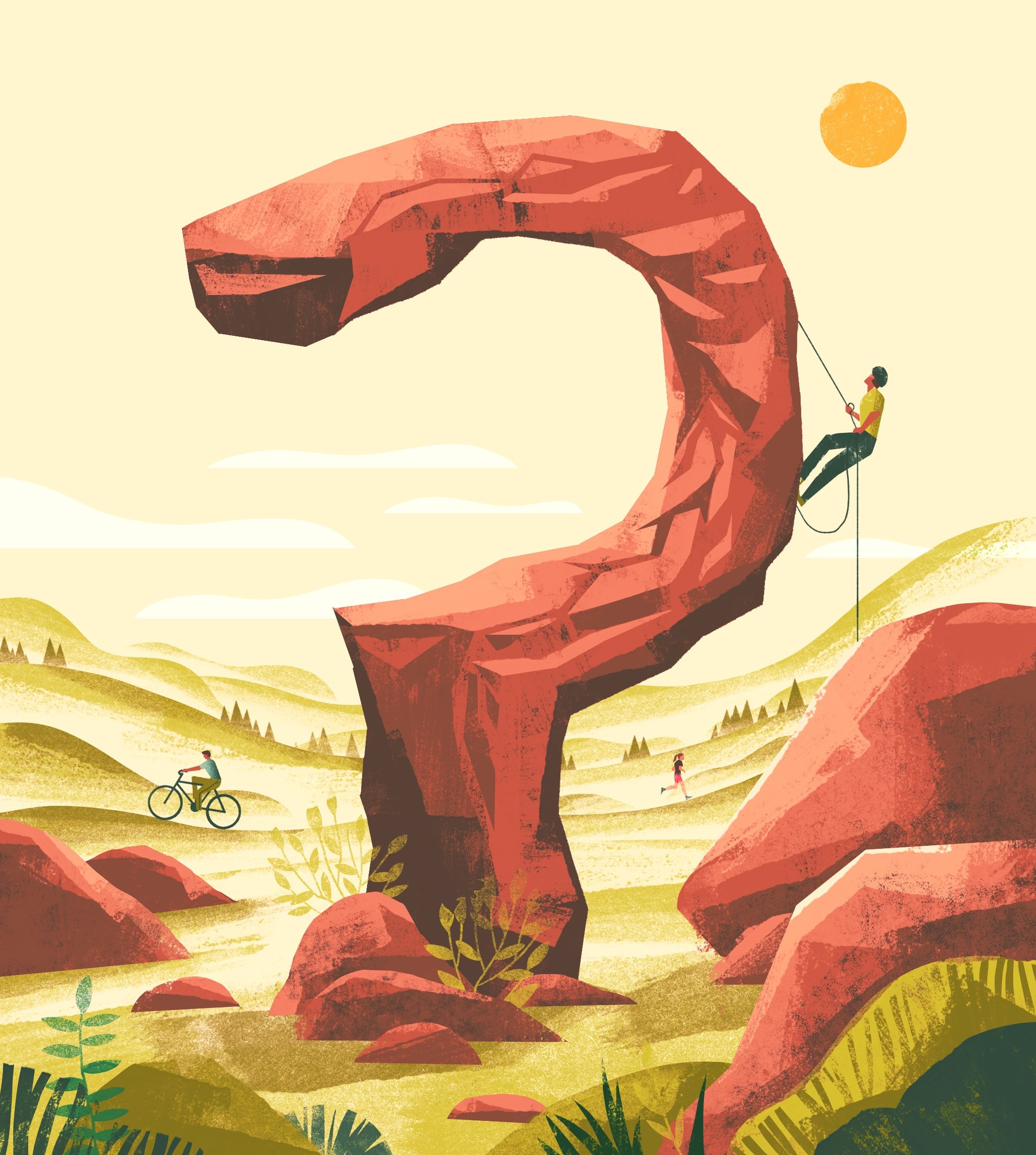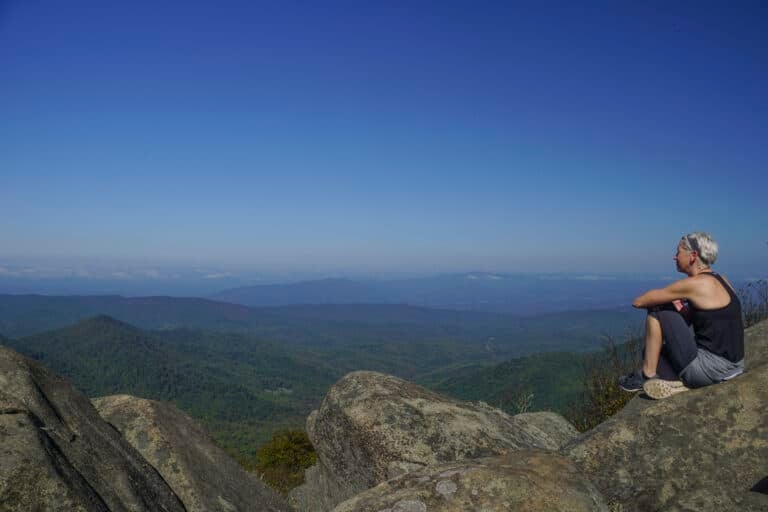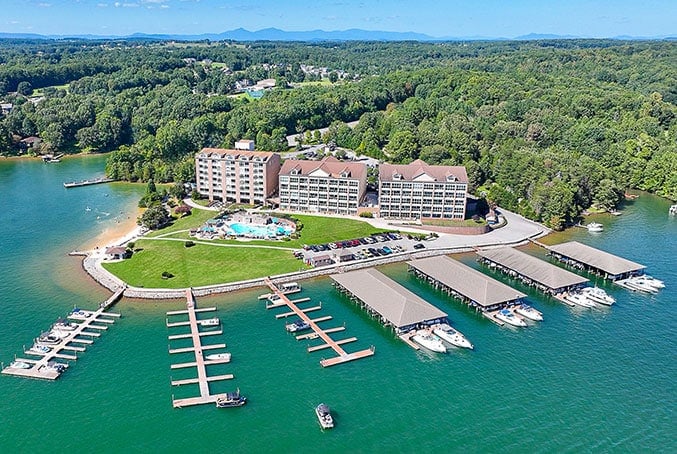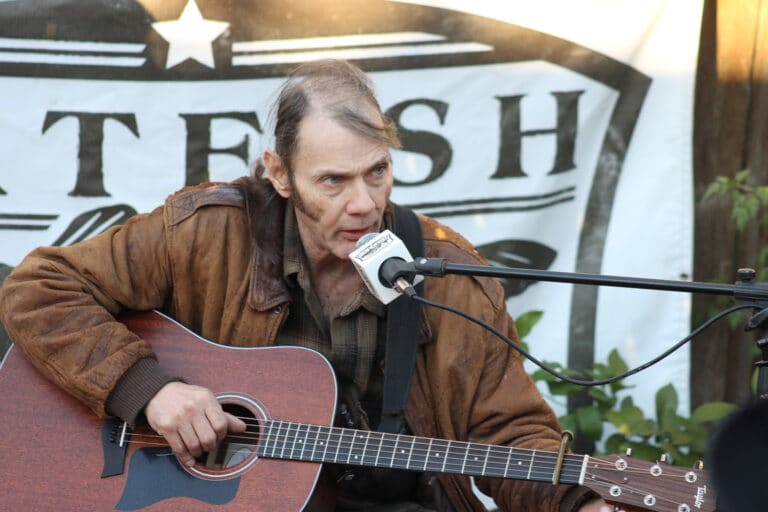Outdoor recreation advocates, event producers, and retailers discuss how the pandemic is affecting outdoor recreation in our region and where the industry is headed.
Where do we go from here? That’s the question on everyone’s mind. In a time when COVID-19 continues to affect day-to-day life and the future is filled with uncertainty, what will outdoor recreation look like when we are able to start gathering again?
Throughout the ongoing pandemic, cities and states have experienced an increase in the number of people getting outside. With outdoor recreation considered appropriate and essential for maintaining health in almost every state, people are turning to the outdoors for physical exertion and mental wellbeing.
Pete Eshelman, director of the Roanoke Outside Foundation, said parks in the Roanoke, Va., area have seen anywhere from a 50-to-200-percent increase in visitation since March. At a time like this, with localities looking to cut their budgets due to a decrease in revenue, parks and rec budgets are typically the first thing on the chopping block, but Eshelman argues that now is really the time for cities and states to fund those opportunities more than ever.
“Developing our recreation infrastructure is an opportunity to invest in resources like trails and river access points that will benefit the quality of life and economy of the community down the road,” he said. “We’re anticipating seeing people leaving densely populated areas and moving to less densely populated areas. So, I think those communities that get out in front of this trend, make some serious investment, and build their outdoor brand are going to win.”
Roan Mountain, Tenn., is one of those places that relies on outdoor recreation to bring in tourism dollars as an official Appalachian Trail Community. Mike Hill, a Carter County commissioner representing Roan Mountain, said businesses in town rely on the thru-hiker bubble that comes through each year. “When they come off trail in Roan Mountain, they’ve been in the woods since Erwin, Tenn.,” he said. “They’re hungry. They’d love to do some laundry. They need resupply items. A shower with hot water and a washcloth is a huge deal. They come off the trail with discretionary income and specific needs.”
When the Appalachian Trail Conservancy asked thru-hikers to step off the trail in March, Roan Mountain lost out on some of that revenue generated by hikers stopping in town. The town also canceled their annual trail festival, Hikerpalooza, originally scheduled for May. Although the class of 2020 thru-hikers will have to reschedule their thru-hikes, Hill and others in the community are pushing the message that Roan Mountain is the perfect place to get outside away from other people. “We are Roan Mountain and we are the Appalachian Trail,” Hill said. “Social distancing wise, it’s a really awesome opportunity to get out away from it all. I really think that message is going to resonate more and mean more to people now than it would have six months ago. The trail is still here, our characters are still here. There’s plenty of room, and we’ll see you when you get here.”
The Road to Recovery
So how can the outdoor industry be a part of our economic recovery? The Outdoor Alliance, a national coalition of 10 outdoor recreation groups, including IMBA, Access Fund, and American Whitewater, is advocating for recreation infrastructure projects at the Congressional level. Communications Director Tania Lown-Hecht said the pandemic amplified inequalities that have existed in communities for a long time. “Where are the green spaces, parks, and forests and who can get there?” she said. “Our hope is that decision makers, especially members of Congress, see how important that kind of recreation and green infrastructure is for the country and see that as a priority investment.”
To address these inequalities and contribute to economic recovery, organizations including Outdoor Alliance are pushing for national solutions like a conservation corps dedicated to rebuilding outdoor infrastructure and providing jobs. Legislation like the Great American Outdoors Act would provide permanent funding for the Land and Water Conservation Fund and money for backlogged park maintenance projects. “That would provide crucial funding that will help put people back to work, address urgent maintenance needs, and have more close to home recreation opportunities,” Lown-Hecht said.
Rethinking Events
An event, whether it’s a race, festival, or fundraiser, is centered around the idea of community and bringing people together. Racers huddled at the start line, volunteers working aid stations, and crowds surging towards the stage—it’s difficult to imagine what these events will look like with social distancing measures put in place.
Gerry Seavo James, founder of The Waterman Series and Explore Kentucky, puts on events throughout Kentucky, including paddling races, festivals and a triathlon, that draw thousands of people from across the country. And all of it—the funding, the participation, the permits—is up in the air. “For me it’s a big hit, but also for the local community it’s a hit because we come and camp and buy food and gasoline,” James said. “They stay at the campground or a hotel, we buy shirts, there’s snacks, we eat at the barbecue restaurant where it ends. It’s part of this ecosystem of events around the state.”
James started canceling events scheduled in March, April, and May before Kentucky got its first confirmed case to keep people safe. But the uncertainty of how long the pandemic would last, and how widespread the effects would be, made it difficult when thinking about events farther down the line. For two years, James has been helping plan the Outdoor Adventure Weekend with the Friends of Cherokee State Historic Park for June 2020. The park was originally built during a time of segregation as one of the few parks in the South open to the Black community. Funds raised from a weekend of art, music, and cultural activities would go towards revitalization of the park, including new signage, a pollinator habitat, and programming. The three-day event has now been rescheduled for Summer 2021.
“It all came crashing to a halt,” James said. “For this African American-oriented project that already has less attention than legacy organizations, can we bounce back after COVID? The economy’s going to be down. Can we get the donations we need?”
These events, no matter their size, take time and funding to succeed. Planning for Color the Crag, a climbing festival held at Horse Pens 40 to promote black, indigenous, and people of color climbers, takes organizers a full year to prepare for four days of climbing, clinics, and demos. Leaders from Brown Girls Climb and Brothers of Climbing, the partnership behind the festival, decided to cancel the festival in October to take care of themselves, their families, and their community during these difficult times. Brittany Leavitt, the festival’s director of operations, said even if the pandemic were over by the end of the summer, it wouldn’t be enough time to get everything together. “We’ve all seen the documentary of Fyre Fest,” she said. “That’s pretty much what they did. They did it in a few weeks to try and figure things out. That’s just impossible.”
With the Summer Outdoor Retailer show cancelled, opportunities to network with brands for sponsorships were cut short. “There’s been furloughs and layoffs,” Leavitt said. “A lot of brands have downsized their employees. Therefore, most of that money isn’t going to go towards events. It’s going to go towards supporting their employees. That takes a big toll on us because we aren’t able to redesign or reconfigure that support system for this event.”
When funding increases, Leavitt said brands need to take a look at how they are sponsoring athletes and influencers in the industry and with what resources. “Recognizing that being paid in income is important,” she said. “Likes aren’t going to pay the rent. There’s multiple levels of who has rank in the industry, whether it’s in the nonprofit or for-profit world, and who comes out of this situation okay. If brands want to come out of this in a better light, they have to start thinking about the bigger picture. How are they actually creating space for BlPOC people in their business in higher-level positions? How are they going to look at their ambassador and athlete team? How are they actually taking the time to listen and wanting to fix the problems versus just throwing money to try and do a quick fix.”
When deciding to cancel or reschedule, Tes Sobomehin Marshall, race director and founder of runningnerds, looked at each of her events individually. “If it’s a fundraising event that was meant to raise money for a charity, and that’s one of their main sources of income, I think it’s important to try to figure out a way to keep people engaged,” Marshall said. “I’m not trying to force virtual events down the running community’s throat. I want to do stuff that people want.”
While many of her races were canceled or turned into virtual events, Marshall is still considering what to do about her largest event. The Race, scheduled for the first weekend of October, brings in runners from across the country. Even if she can get a permit, Marshall wonders if people will show up. “We could be allowed to have an event, but are people going to sign up for it?” she said. “Are they going to feel comfortable coming out?”
When putting in a request for a permit, event producers have to demonstrate safety, security, and recycling plans. Marshall thinks they will have to demonstrate a plan for preventing the spread of diseases in the future. “I think it’s going to be very similar to how things changed after 9/11 with security and safety protocols,” she said. “I think it will change and eventually it will feel like the new normal. That’s my opinion. We were always conscious of health and cleanliness when it came to events, but I think there’s going to need to be a more outward show.”
A New Way of Doing Business
From online sales and curbside pickups to virtual events, retailers are reimagining the way they interact with customers. For Joey Riddle, owner of Joey’s Bike Shop in West Virginia, bike sales and bike repairs are through the roof. “We have no bikes on our floor and we can’t get any,” he said. “That’s the biggest problem right now. Bike companies are sold out of bikes. Typically, this time of year, we have over 100 bikes in stock. We have 15 with nothing on the horizon probably until July.”
Most bikes and bike parts are made overseas. Between factory closures, shipping delays, and restrictions, companies are struggling to keep up with high demand. Riddle is actually turning away customers, telling them he’ll call if he finds any bikes. “This is like the perfect storm,” he said. “We’re getting in whatever we can. It doesn’t seem to matter what it is. We’re selling it.”
At the same time, more bike manufacturers are shipping directly to customers—a growing trend in the last five years, with the pandemic fast tracking the way bike companies do things. But customers are still coming into the shop when something isn’t shipped right, or they can’t put something together. “The internet cannot fix your bike,” Riddle said.
Altogether, Riddle sees the increased interest as a good thing for the bike industry. “Hopefully we can retain 10 to 15 percent of these new customers,” he said. “When people start going to sporting events again and living their lives as they did before, I’m hoping a lot of these folks don’t forget how much fun they had riding bikes with their family or going out in the woods and getting away from screens. I hope they continue to do that.”
At Phidippides, a running store in Georgia, the staff tried to figure out how to keep the shop open when so much of their business is done face to face. When relying on online sales wasn’t working, they started offering virtual fittings through Zoom. Store employees walked customers through the normal process, asking about their running habits and watching them run around. The customer could then get the shoe shipped to them or pick it up curbside to see if it fit. “A big concern when we rolled this out was the feel of a shoe is so important and we were afraid we were going to be taking a lot of returns through this process,” said General Manager Sloan Ware. “But it actually hasn’t been the case. Most of the time, we’re able to get down to a shoe that is going to work really well for that person. It hasn’t been as difficult with returns as we initially expected.”
While the virtual fittings have helped Phidippides stay open during this time, it hasn’t made up for people coming into the store and looking around. “Across the board, people are very concerned about where their money is going,” Ware said. “Right now, buying a $130 pair of shoes is a luxury good. With so much uncertainty in the world for people’s incomes, it’s a big ask for people to be spending a lot of their money on something outdoorsy.”
Having been a part of the Atlanta running community since 1974, Ware said now the shop needs the running community’s support more than ever. “You’re seeing that across the board,” he said. “Shop local, drink local, eat local. I think that message is getting through to people and I hope they remember it after we get through the pandemic.” While in-person fittings will always be Phidippides’ bread and butter, Ware does think that the ways in which the pandemic forced them to get creative will help them serve customers unable to get into the store down the line.
For seasonal businesses like River & Trail Outfitters, the pandemic hit at a particularly difficult time—the lowest cash point of the year coming into their main season. “For a seasonal business, you really have to think about the three or four months to make hay while the sun shines,” said owner Natasha Baihly. “You just really hope you’re going to get those couple of months in order to make your business go. You don’t get the opportunity to slide it into the winter or have things pick up in the middle of the fall.”
The outfitter offers a variety of activities and camping options near Harpers Ferry, W.Va., including whitewater rafting, kayak, tube, and bike rentals, and food tours. River & Trail opened up in May with new guidelines in place. For rafting trips, they’re keeping it to one group per boat. Shuttles are running at 30 percent capacity with the windows down and are sanitized after every trip. Common spaces at the campgrounds are closed and porta potties were added to each cabin. “There is just a whole lot of uncertainty,” Baihly said. “Everyone was not sure what to plan for, not sure if they should hire for all of their programs. With an outdoor business, you kind of recreate the wheel every year. You have at least a chunk of staff that’s new. So, there’s a whole lot of effort that goes into preparing for a short amount of time. The big question is what do we invest in and prepare for not knowing what kind of a season we’re going to have.”
River & Trail was also in the middle of an expansion when the pandemic hit, preparing to open another location for their whitewater rafting trips. The Baihly’s decided to take a leap of faith and go ahead with the new location in hopes that families would be looking for ways to get outside together this summer. “My dad always said that boats and beer were the things that would withstand anything,” Baihly said. “And I think he might be right. We have 48 years behind us, so that’s a wonderful thing.”
This article includes the most up to date information since this issue went to press on June 18. Since that time, certain details affected by the pandemic may have changed. Please check with local regulations and organizations before making plans to get outside.
Moving Forward — More Voices from the Outdoors Predict the Path Ahead
Amy Allison, director of North Carolina’s Outdoor Recreation Industry Office, on tourism post-pandemic: “When the restrictions start to loosen, we are going to see visitors flooding our public lands, making it more imperative than ever for us to do our part to mitigate that impact and take care of our gateway communities, our wild places, and those who work and volunteer in those areas.”
Dr. Kim Walker, co-founder of Abundant Life Adventure Club, on taking a simpler approach to getting outside: “It doesn’t have to be very complicated, you don’t have to go very far, and you don’t have to spend a lot of money. I feel like a lot more people are realizing or revisiting their appreciation for the health benefits of spending time outdoors.”
Jenn Chew, director of The Assaults, on supporting events in the future: “The uncertainty of when it can open back up has affected not only the people who work in the industry, whether it be event directors or producers, but even people that are stagehands, AV companies, and anything that has to do with putting on events. Without participation, they’re going to die off, just as they are right now with not being able to have them. I think it’s really important for people to participate, support, and attend events, festivals, rides, races, and concerts.”
Andrea Hassler, executive director of Southeastern Climbers Coalition, on nonprofits: “We have seen a dip in nonprofit contributions as a result of a decrease in the economy and the instability and uncertainty of the future. Members are still willing to contribute, and they have. But without the ability to offer events in person, our fundraising is limited. I’ve also seen a decrease in the availability of grant funding for projects. A lot of corporations that typically sponsor or provide grants have diverted that funding elsewhere or do not have that funding available because of the current economy.”
Jenny Baker, host of The Georgia Jewel, on balancing work and parenthood: “As parents, we need to be present for our children. At the same time, our livelihoods are in jeopardy. How do you manage that, emotionally? Your mind is constantly on that hamster wheel of what bills can I put off, what things do I need. And then your children are home and they don’t understand things either.”
Cover illustration by Kevin Howdeshell








